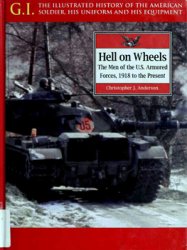Pol Pot (nee Saloth Sar) (b. l928). Cambodian. Leader of the Cambodian Communists, (Khmers Rouges), during Cambodia’s postindependence wars. Born into a prominent land owning family, he joined the Communist Party upon returning from study in France in 1953. He and other French-educated party members gained ascendancy when Pol Pot was confirmed as Party Secretary in 1963. Enjoying only tepid support from the Vietnamese, who restrained the Khmers Rouges in order not to jeopardize their relations with Prince Norodom Sihanouk, Pol Pot and his faction became increasingly populist and xenophobic in outlook. This orientation placed him at odds with Vietnamese-trained Khmers and with the Vietnamese themselves. Following the war in 1975 he exterminated his rivals, unleashed a reign of terror upon civilians who had not been on the revolutionary side, antagonized Vietnam by making claims on Vietnamese territory, and obtained support from China. Vietnam invaded to remove his regime by force in December 1978, and Pol Pot retreated to the jungle to wage a war of resistance from camps near the Thai border. WST.
Poperinghe. Town, 4 miles (7km) west of Ypres, which became an important recreation centre for British troops moving in and out of the Ypres Salient, 1914-18.
Po river, Battle of the (April 9-23
1945). The final Allied offensive of the Italian campaign, fought as a battle of annihilation by 15th Army Group (Clark) with Fifth Army (Truscott) and Eighth Army (McCreery) to destroy Army Group C (von Vietinghoffj south of the river.
Both Armies made their main thrusts directly towards Bologna, coupled with subsidiary flanking thrusts through difficult country. Eighth Army’s flanking attack was through the narrow Argenta Gap between Lake Comacchio and German-created floods; Fifth Army’s was through the higher Apennines, well to the west of its main thrust. Both flanking thrusts succeeded, leading to the encirclement and destruction of the Tenth and Fourteenth German Armies (Herr and Lemelsen).
Eighth Army attacked first on April 9 to draw German reserves away from Fifth Army’s front. McCreery carried out his main thrust across the Senio, north of and parallel to the main Bologna road (Via Emilia). V Corps (Keightley) with four divisions and II Polish Corps (Bohusz-Szyszko) with two divisions, struck the boundary between LXXVI Panzer Corps (von Schwerin) and I Parachute Corps (Heidrich), and avoided the more heavily defended sector of the German line south of the road where Herr expected the main British effort. The attack was preceded by strategic bombers laying carpets of fragmentation bombs on the German defences and gun areas, and then by a novel “sandwich” of alternating artillery bombardments and air strikes by fighter-bombers, the last of which was a dummy attack as the assault troops crossed the Senio. Extensive use was also made of flamethrowing tanks.
Eighth Army’s assault was successful and by the following evening both Corps were approaching the Santerno, which they had crossed by April 12. Meanwhile, the eastern side of the Argenta Gap had been secured by amphibious operations across Lake Comacchio. On April 13, McCreery directed Keightley’s V Corps to thrust through the Argenta Gap, using a specially organized force of tanks and infantry in armoured personnel carriers, and with 6th Armoured Division held in reserve for the final breakthrough. The main thrust towards Bologna was to be continued by the Poles and XIII Corps (Harding), brought round from the quiet Apennine sector. By the time Fifth Army opened its offensive on April 14, Eighth Army was well into the Argenta Gap; and Hitler had refused a request by von Vietinghoff to take his last chance of saving Army Group C by withdrawing across the Po to the Alps.
Truscott’s subsidiary attack, mounted by IV US Corps (Crit-tenberger), started first and tore open the front of LI Mountain Corps (Hauck), enabling him to start thrusting his way through the remaining mountains towards the Po Valley. The main Fifth Army attack by II US Corps (Keyes) opened next day, but made
Slow progress against XIV Panzer Corps (von Senger), holding Bologna’s well-prepared defences.
By April 19 Army Group C was nearing exhaustion: Eighth Army was almost through the Argenta Gap and Fifth Army was within a day of reaching the Po Valley west of Bologna. Von Vietinghoff decided to defy Hitler and ordered a withdrawal across the Po. He was too late. Allied Air Forces had already destroyed all the bridges and ferries. The two Allied armoured divisions leading the flanking thrusts - 6th South African under IV US Corps and 6th British under V Corps - joined hands at Finale nell’Emilia between Bologna and the Po on April 23. Most formations of Army Group C were destroyed by air action as they tried to reach the Po, or surrendered on its banks. WGFJ.
Po river, crossing of (April 23-26 1945). After the destruction of Army Group C south of the Po, engineering problems posed more difficulty than German opposition. Fifth Army (Truscott) started crossing the Po at San Benedetto on April 23, followed by Eighth Army (McCreery) between Ficarolo and Ferrara two days later. Fifth Army then advanced north and west to occupy Northwestern Italy, while Eighth Army swung eastwards towards Trieste, entered by Freyberg’s New Zealanders on May 2 1945.
Pork Chop Hill. An outpost position in the I Corps sector during the Korean War which was the scene of heavy fighting in spring 1953. Judged to be too insignificant to justify the heavy casualties suffered by the US defenders, it was abandoned on July 10 1953.
Port Arthur, siege of (June 1 1904-January 2 1905). In the Russo-Japanese War, Port Arthur (Lushun), Russia’s main Pacific naval base and the terminus of the Trans-Siberian Railway, was Japan’s major strategic objective. Some 10,000 survivors of Stdssel’s
40,000-strong garrison surrendered. The Japanese lost heavily in infantry assaults until their heavy howitzers reduced the defences, suffering some 59,000 casualties, plus 33,000 sick.




 World History
World History









